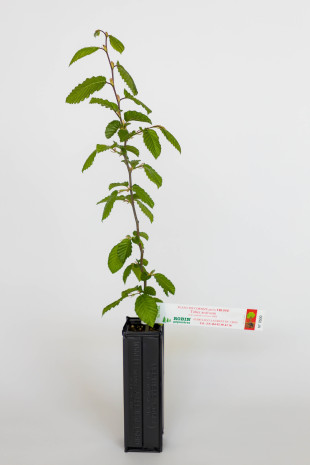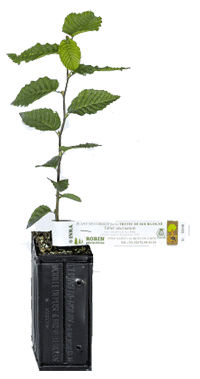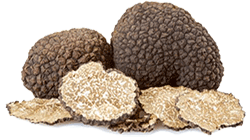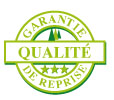


 Young truffle plant of common hornbeam (Carpinus betulus) mycorhized with tuber aestivum. Common hornbeam intended for the production of summer truffles. Truffle hornbeam plant aged from 1 to 3 years, produced in France with certified quality under INRAE control.
Young truffle plant of common hornbeam (Carpinus betulus) mycorhized with tuber aestivum. Common hornbeam intended for the production of summer truffles. Truffle hornbeam plant aged from 1 to 3 years, produced in France with certified quality under INRAE control.
Would you like to diversify your truffle farm and try your hand at growing summer truffles? Are you looking for plants that can produce this famous St. John's Day truffle, harvested in the summer season and appreciated for its fine and subtle aromas? The common hornbeam could well suit your plans and prove to be the ideal truffle plant to grace your truffle orchard!
 This common hornbeam truffle plant is obtained after controlled and certified mycorrhization of a common hornbeam (Carpinus betulus) with summer truffle spores (Tuber aestivum). The resulting tree is ready to be planted within your truffle field. It will produce its first truffles within 6 to 7 years.
This common hornbeam truffle plant is obtained after controlled and certified mycorrhization of a common hornbeam (Carpinus betulus) with summer truffle spores (Tuber aestivum). The resulting tree is ready to be planted within your truffle field. It will produce its first truffles within 6 to 7 years.
In order to meet your expectations, our common hornbeam truffle plants, mycorhized with the summer truffle, are available in 4 sizes of cups:
- in anti-chignon® R430 cup of 0.43 liters
- in anti-chignon® R600 cup of 0.6 liters
- in anti-chignon® R1.5L cup of 1.5 liters
- in R3L container (volume of 3 liters)
The common hornbeam (Carpinus betulus) is listed among the many forest host species that can live in symbiosis with the summer truffle. Sometimes called hornbeam, it is a fairly common tree in the forests of Central Europe. This tree has all the qualities required for truffle cultivation: it grows relatively quickly, can withstand repeated and severe pruning, and is adapted to the different types of soil in Western Europe. Although it is very resistant to frosts and heat, it does not grow very high in the mountains (1000 m altitude maximum). Not very exigent on the nature of the soil, it prefers nevertheless the silty and fresh soils benefiting from a sunny or semi-shaded exposure.
 With its fine, subtle aromas, this variety of truffle knows how to conquer the palate of foodies. Called the summer truffle or St. John's truffle, Tuber aestivum grows naturally in many regions, starting with the south of France. It is also widespread in other countries such as Italy, Germany and Greece. Externally, the summer truffle looks like the black truffle. Its peridium is indeed black or brownish. On the inside, however, it offers shades of beige or brown with more or less yellow veins. The summer truffle is best eaten raw and sliced. Indeed, cooking tends to attenuate its fragrance.
With its fine, subtle aromas, this variety of truffle knows how to conquer the palate of foodies. Called the summer truffle or St. John's truffle, Tuber aestivum grows naturally in many regions, starting with the south of France. It is also widespread in other countries such as Italy, Germany and Greece. Externally, the summer truffle looks like the black truffle. Its peridium is indeed black or brownish. On the inside, however, it offers shades of beige or brown with more or less yellow veins. The summer truffle is best eaten raw and sliced. Indeed, cooking tends to attenuate its fragrance.
Our truffle hornbeam plants are produced in our laboratories under the control and license of INRAE. These plants are then pampered for many months in our nurseries. Quality plants, carefully selected, it is the guarantee to obtain a good yield after only a few years.
 The plants raised in ROBIN ANTI-CHIGNON® buckets are subject to a guarantee of recovery in the event of failure to recover more than 20% of the plants delivered. Under this guarantee, the seller undertakes to replace free of charge the defective plants during the season following the actual observation by the seller of the defective delivered plants.
The plants raised in ROBIN ANTI-CHIGNON® buckets are subject to a guarantee of recovery in the event of failure to recover more than 20% of the plants delivered. Under this guarantee, the seller undertakes to replace free of charge the defective plants during the season following the actual observation by the seller of the defective delivered plants.